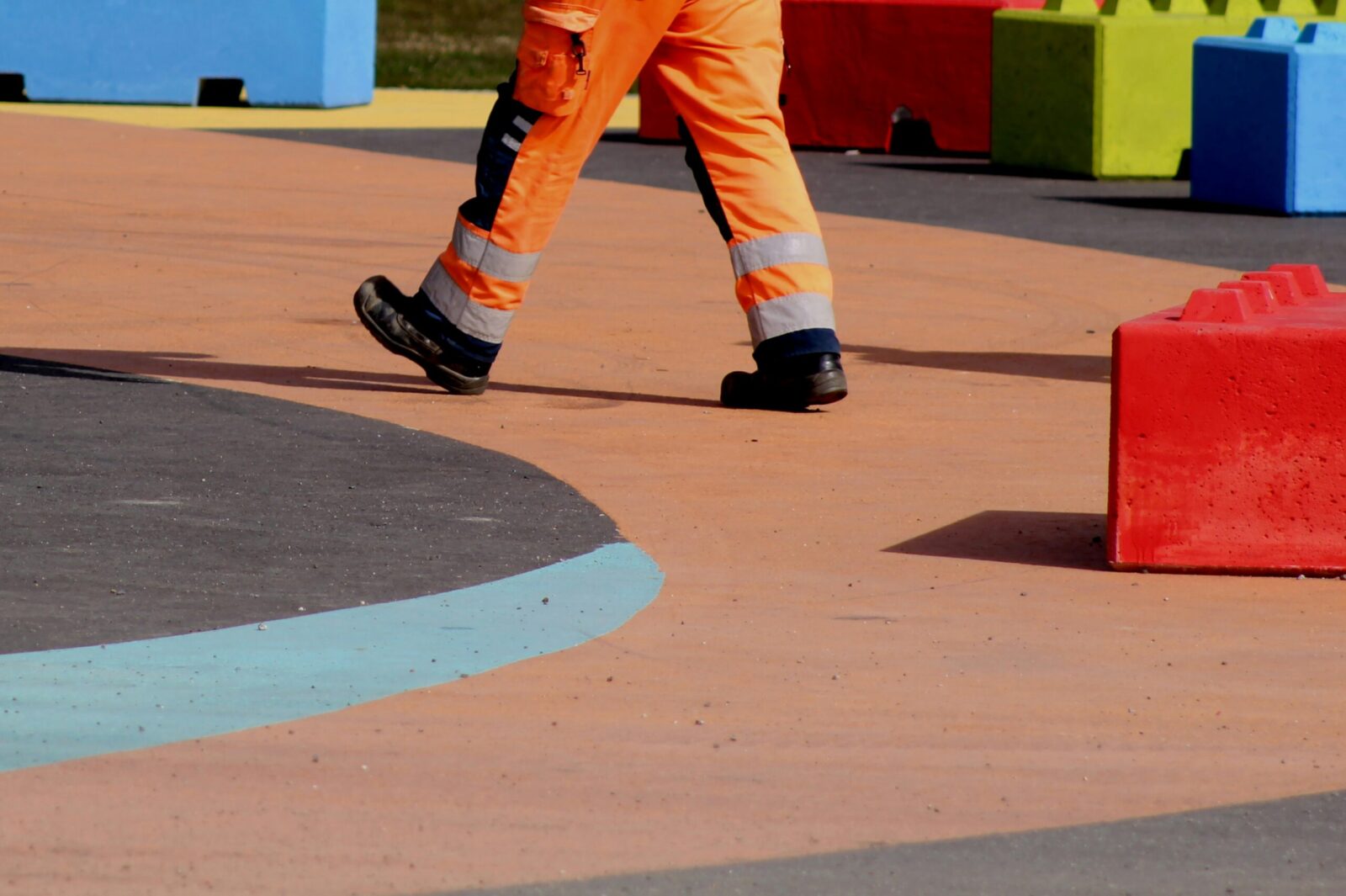
What is the EN 13432 Standard?
Biodegradable packaging has become increasingly important in recent years as the world seeks more sustainable alternatives to traditional packaging materials....

Get 20€ off on your first order!
Safety is a definite concern in industries where employees are exposed to hazardous conditions. Safety footwear plays a critical role in order to mitigate the risks associated with these environments. One of the key factors in ensuring the effectiveness of safety footwear is adherence to EN ISO 20345 standard. In this article, we will learn about the importance of this standard, the test methods, and how they impact worker safety.
EN ISO 20345 is a European standard that establishes the requirements for safety footwear. It sets out the criteria for construction, and performance of footwear to protect wearers in the workplace. By complying with these standards, manufacturers can ensure that their safety footwear provides the necessary protection.
The primary purpose of EN ISO 20345 standard is to minimize the risk of foot injuries in hazardous environments. It ensures that safety footwear offers protection against a range of potential hazards, including impacts, punctures, and slips. Compliance with these standards provides workers with confidence that their footwear will effectively safeguard them in their day-to-day tasks.
Moreover, the standard is continuously updated to follow advancements in technology and changes in workplace safety requirements. This ongoing evaluation ensures that safety footwear remains effective and relevant in an ever-evolving industrial landscape. By adhering to these standards, manufacturers demonstrate their commitment to prioritizing the safety and well-being of workers across various industries.
One of the components of EN ISO 20345 standard is the requirement for safety toecaps. These are designed to protect the wearer’s toes from crushing or impact injuries, resulting from falling objects or accidental collisions. Safety toecaps are typically made from reinforced materials, such as composite or steel.
Safety toecaps come in various shapes and sizes to accommodate different foot shapes and provide maximum comfort. Manufacturers often conduct rigorous testing to ensure that the toecaps meet the required safety standards without compromising the overall fit and feel of the footwear. Specifically for this standard 200 joule impact protection is required from the toecaps.
Puncture-resistance requirement ensures that safety footwear provides adequate protection against sharp objects. This prevents injuries caused by nails, debris, or other sharp objects that may puncture the sole of the shoe.
In addition to the materials used in the sole construction, the design and thickness of the midsole ensure puncture resistance. Some safety footwear models incorporate innovative technologies, such as layered midsoles or embedded plates, to offer superior protection against punctures from various angles.
Slips and falls are common workplace injuries, often resulting in severe consequences. EN ISO 20345 standard address this concern by mandating slip resistance requirements. Safety footwear complying with these guidelines features special sole patterns or materials that enhance traction, reducing the risk of accidental slips and falls.
Advancements in material science have led to the development of specialized outsole compounds that offer superior slip resistance on different surfaces. Manufacturers conduct thorough testing to evaluate the coefficient of friction of these outsoles. This ensures that the safety footwear meets the required standards for slip resistance in various work environments. Safety shoes are tested on tiles made slippery with diluted soap or on steel floor that is oiled to test how slip resistant the shoes are.
| Marking | Meaning | Requirements |
|---|---|---|
| SB | Basic Requirements | – Toe cap resistance: 200 Joules impact / 15 kN compression<br>- Antistatic or conductive properties if specified |
| S1 | Basic + Additional Properties | – All SB requirements<br>- Closed heel<br>- Antistatic properties (A)<br>- Energy absorption in the heel (E)<br>- Fuel oil resistance (FO) |
| S1P | S1 + Penetration Resistance | – All S1 requirements<br>- Penetration-resistant midsole (P) |
| S2 | S1 + Water Resistance | – All S1 requirements<br>- Water penetration and absorption resistance (WRU) |
| S3 | S2 + Penetration Resistance | – All S2 requirements<br>- Penetration-resistant midsole (P)<br>- Cleated outsole |
| S4 | S1 + Fully Molded Polymer/Rubber | – All S1 requirements<br>- Fully molded polymer/rubber construction<br>- Waterproof (WR) |
| S5 | S4 + Penetration Resistance | – All S4 requirements<br>- Penetration-resistant midsole (P)<br>- Cleated outsole |
| Marking | Meaning | Requirements |
|---|---|---|
| A | Antistatic Properties | Electrical resistance between 100 kΩ and 1000 MΩ |
| C | Conductive Properties | Electrical resistance below 100 kΩ |
| E | Energy Absorption of Heel | Minimum energy absorption of 20 Joules |
| FO | Fuel Oil Resistance | Sole material resistance to fuel oil |
| P | Penetration-Resistant Midsole | Maximum penetration force: 1100 N (fabric/metal midsole) |
| WR | Water Resistance (whole boot) | No water penetration during 80 minutes of water exposure |
| WRU | Water Penetration/Absorption (Upper) | Water penetration: ≤ 0.2 g<br>Water absorption: ≤ 30% (by mass) |
| M | Metatarsal Protection | Impact protection of 100 J to the metatarsal area |
| CI | Cold Insulation | Temperature drop of the insole ≤ 10°C after 30 minutes exposure to -17°C |
| HI | Heat Insulation | Temperature rise of the insole ≤ 22°C after 30 minutes exposure to 150°C |
| HRO | Heat Resistance of Outsole | Outsole resistance to 300°C for 60 seconds (contact heat) |
| SRC | Slip Resistance (SRA + SRB) | – SRA: Slip resistance on ceramic tile with detergent<br>- SRB: Slip resistance on steel floor with glycerol |
| CR | Cut Resistance (Upper) | Upper material cut resistance ≥ 2.5 N/mm² |
| AN | Ankle Protection | Provides protection to the ankle against impact forces |
Compliance with EN ISO 20345 standard can significantly reduce the occurrence of workplace injuries. By providing adequate protection against potential hazards, safety footwear ensures that workers are safeguarded from foot injuries, which may lead to temporary or permanent disability.
Moreover, the implementation of the standard not only benefits individual workers but also contributes to overall workplace safety. By establishing a uniform set of safety requirements for footwear, organizations can create a safer work environment for all employees, reducing the risk of accidents and injuries across the board.
Safety footwear that adheres to EN ISO 20345 standard not only protects workers but also takes into account their comfort and mobility. Manufacturers must ensure that the footwear is ergonomically designed, lightweight, and allows for ease of movement. This combination of comfort and functionality brings about increased worker satisfaction and productivity.
Furthermore, prioritizing worker comfort through compliance with EN ISO 20345 standard can have positive implications for employee morale and retention rates. When workers feel that their well-being is valued and protected, they are more likely to remain engaged and committed to their roles, fostering a positive work culture within the organization.
As technologies and industries evolve, so do safety footwear requirements. Future developments in EN ISO 20345 standard are likely to address emerging hazards and incorporate advancements in materials and manufacturing processes. This ongoing refinement ensures that safety footwear continues to provide optimal protection for workers in an ever-changing industrial landscape.
One of the key areas of focus for future developments in safety footwear standards is the integration of sustainability practices. Manufacturers are exploring eco-friendly materials and production methods to reduce the carbon footprint of safety footwear. By aligning with global sustainability goals, the next iterations of the standard are expected to prioritize not only worker safety but also environmental impact.
Advancements in technology are revolutionizing the safety footwear industry. Technology, such as innovative materials, is playing a vital role in advancing safety standards. These technological advancements are set to transform safety footwear, allowing for even greater protection and comfort for workers.
Furthermore, the integration of artificial intelligence (AI) and machine learning algorithms is poised to enhance the performance of safety footwear. By analyzing data on workplace accidents and user feedback, AI-powered systems can help manufacturers design footwear that is tailored to specific occupational risks. This personalized approach to safety footwear design represents a significant leap forward in ensuring the well-being of workers across various industries.
When it comes to safety footwear, EN ISO 20345 standard serves as a benchmark for manufacturers and employers. By adhering to these standards, workers can trust that their footwear provides reliable protection against potential hazards. Compliance not only reduces the risk of workplace injuries but also enhances worker comfort and mobility. As we look towards the future, ongoing advancements in EN ISO 20345 standard will ensure that safety footwear continues to evolve, keeping pace with ever-changing industrial environments.
Thank you! You've signed up for our newsletter.



















Biodegradable packaging has become increasingly important in recent years as the world seeks more sustainable alternatives to traditional packaging materials....

ISO 22000 is an internationally recognized standard that sets the requirements for a Food Safety Management System (FSMS). Designed to...

In today’s busy world, safety is paramount. Whether you’re working in construction, transportation, or any other industry where visibility is...

Biodegradable packaging has become increasingly important in recent years as the world seeks more sustainable alternatives to traditional packaging materials....

ISO 22000 is an internationally recognized standard that sets the requirements for a Food Safety Management System (FSMS). Designed to...

In today’s busy world, safety is paramount. Whether you’re working in construction, transportation, or any other industry where visibility is...
Get 20€ off on your first order!
Save 30% by buying directly from brands, and get an extra 10€ off orders over €100
Save 30% by buying directly form brands, and get an extra 10€ off orders over €100